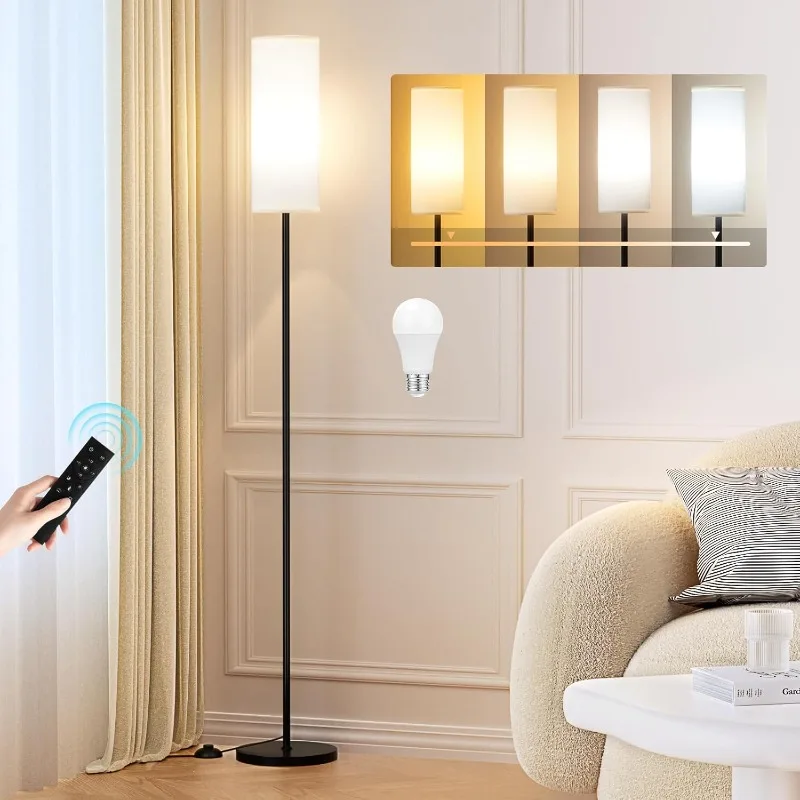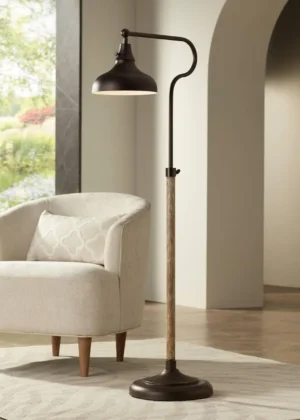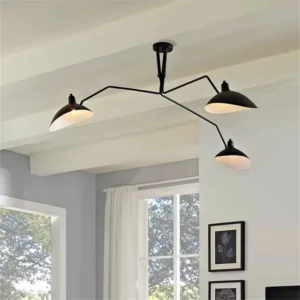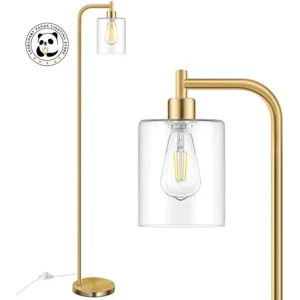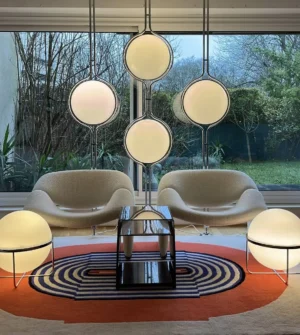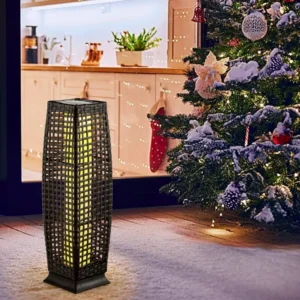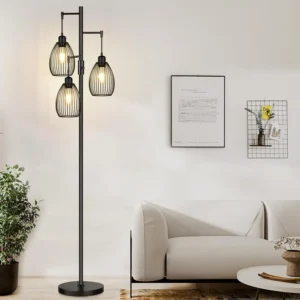Understanding Light Quality: The Key to Superior Floor Lamp Performance
When it comes to illuminating your living space, not all floor lamps are created equal. The “best light” from a floor lamp isn’t just about brightness—it encompasses color temperature, distribution patterns, and how the light serves your specific needs. Finding the perfect balance between aesthetics and functionality is crucial, as your floor lamp should complement your décor while providing optimal illumination.
Light quality significantly impacts our daily lives. Studies have shown that proper lighting directly affects mood, productivity, and even eye health. The right floor lamp can transform a dim corner into a cozy reading nook or provide the ambient glow that makes your living room feel warm and inviting.
In this comprehensive guide, we’ll explore what makes certain floor lamps superior light sources, the science behind quality illumination, and how to select the perfect lamp for your specific needs. With the proper knowledge, you can make an informed decision that enhances both your space’s functionality and atmosphere.
Interior Ivy specializes in curated lighting solutions that blend form and function. Choosing the perfect arc floor lamp requires understanding how design elements influence light quality, which we’ll explore in detail throughout this article.
The Science of “Best Light”: Essential Lighting Measurements
To identify floor lamps that provide superior light, you need to understand the key measurements that determine light quality:
Lumens: Measuring Brightness
Lumens indicate how much light a lamp produces—the higher the lumens, the brighter the light. Unlike the outdated wattage measurement (which only tells you energy consumption), lumens directly measure light output:
- Ambient room lighting: 1000-3000 lumens
- Task lighting (reading, crafting): 400-800 lumens
- Accent lighting: 200-400 lumens
Color Temperature: The Mood Setter
Measured in Kelvins (K), color temperature affects the perceived warmth or coolness of light:
- Warm light (2700-3000K): Creates cozy, relaxing atmospheres ideal for living rooms and bedrooms
- Neutral light (3500-4500K): Good for kitchens and workspaces where natural lighting is preferred
- Cool light (5000-6500K): Energizing and focus-enhancing, best for detailed tasks and workspaces
Color Rendering Index (CRI)
CRI measures how accurately a light source reveals the true colors of objects compared to natural light. The scale ranges from 0-100, with higher numbers indicating better color reproduction:
- 80+ CRI: Good for general home use
- 90+ CRI: Excellent for spaces where color accuracy matters (art studios, reading areas)
Light Distribution
How a lamp disperses light affects its functionality:
- Direct light: Focused beam for tasks and reading
- Indirect light: Bounces off walls/ceilings for gentle, diffused illumination
- Diffused light: Softened through shades for comfortable ambient lighting
Dimmable arc floor lamps offer versatility in controlling light output to match different activities and times of day. Understanding these technical aspects helps you evaluate how well a lamp will serve your best lighting for ambient design needs.
Types of Floor Lamps That Excel at Providing Optimal Light
Different floor lamp designs serve distinct lighting purposes. Understanding these differences helps you choose the right lamp for your specific needs.
Torchiere Floor Lamps: Superior Ambient Illumination
Torchiere lamps direct light upward toward the ceiling, creating gentle, widespread illumination that fills the entire room. This design minimizes harsh shadows and reduces glare, making torchieres ideal for general lighting purposes.
- Best for: Overall room illumination, especially in spaces with dark corners
- Light characteristics: Soft, diffused, and evenly distributed
- Optimal placement: Corners or alongside furniture where they won’t create obstacles
- Lumens needed: 1500+ lumens for effective room fill
For maximum effectiveness, consider your ceiling height and color—higher ceilings require brighter lamps, while white or light-colored ceilings reflect more light than dark ones.
Arc Floor Lamps: Targeted Overhead Brilliance
Arc lamps feature a curved stem that extends outward from the base, positioning the light source directly above seating areas without requiring ceiling fixtures. This design provides focused illumination exactly where needed while adding a striking visual element to your décor.
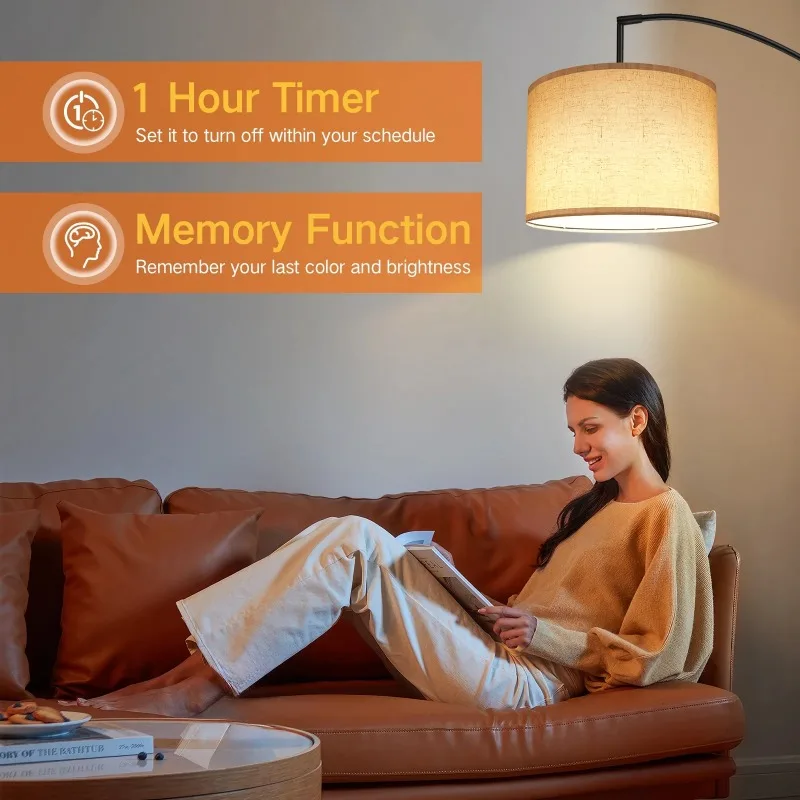
- Best for: Reading areas, dining tables, conversation spaces
- Light characteristics: Directional, focused, adjustable coverage
- Key considerations: Height (typically 60-80 inches tall), reach (20-45 inches of extension), and base stability
Adjustable arc floor lamps offer even greater versatility by allowing you to modify the height and angle of illumination as needed. Their ability to provide overhead light without permanent installation makes them particularly valuable in rental spaces or rooms where ceiling fixtures aren’t feasible.
Task-Oriented Floor Lamps: Precision Lighting for Activities
Task lamps are designed specifically for activities requiring concentrated light, such as reading, crafting, or detailed work. They typically feature adjustable heads and flexible positioning to direct light precisely where needed.
- Best for: Reading chairs, craft stations, desks
- Light characteristics: Bright, focused, directional
- Key features: Adjustable heads, flexible necks, proper height (48-58 inches for seated activities)
- Optimal positioning: Light source should be positioned behind and slightly to the side of your shoulder to reduce glare
Task lamps work best when complementing existing ambient lighting rather than serving as the sole light source in a room. Understanding the specific requirements for choosing the perfect reading lamp ensures comfortable, eye-friendly illumination for extended periods of focus.
Multi-Head/Tree Lamps: Versatile Multi-Zone Lighting
These lamps feature multiple adjustable light sources on a single stand, allowing you to direct illumination in several directions simultaneously. This design is perfect for multi-purpose spaces where different lighting zones are needed.
- Best for: Activity areas, multi-use spaces, larger rooms
- Light characteristics: Multiple adjustable light paths, customizable coverage
- Key features: Independent switches, adjustable arms or heads
Multi-light arc floor lamps represent the premium version of this category, combining the overhead benefits of arc designs with the versatility of multiple light sources.
Light Source Technology: The Foundation of Quality Illumination
The type of light source your floor lamp uses fundamentally determines its light quality, efficiency, and lifespan.
LED Technology Advantages
LED (Light Emitting Diode) technology has revolutionized lighting with significant benefits:
- Efficiency: Produces 75-80% less energy consumption than incandescent bulbs
- Longevity: 25,000+ hours lifespan (vs. 1,000 hours for incandescent)
- Color options: Available in multiple color temperatures and with color-changing capabilities
- Instant light: No warm-up time required
- Cool operation: Generates minimal heat, reducing fire risks
LED arc floor lamps combine advanced lighting technology with sophisticated design for superior illumination. When choosing LED lamps, consider whether they use integrated or replaceable LED systems:
- Integrated LEDs: Built directly into the lamp fixture, offering sleek design but requiring replacement of the entire fixture at end-of-life
- Replaceable LED bulbs: More flexible for changing light preferences but may have more visible bulb components
Traditional Light Sources
While LEDs dominate the premium market, other technologies still appear in some floor lamps:
- Incandescent: Warm light quality but inefficient and short-lived
- Halogen: Brighter and whiter than incandescent, but runs hot and uses significant energy
- CFL (Compact Fluorescent): More efficient than incandescent but slower to reach full brightness and contains mercury
For the best combination of light quality, energy efficiency, and longevity, LED technology is the clear winner for most modern floor lamp applications.
How Lampshades and Diffusers Transform Light Quality
The lampshade or diffuser is more than a decorative element—it fundamentally transforms how light is distributed throughout your space.
Shade Materials and Light Transmission
Different materials affect both the quantity and quality of light:
- Paper/parchment: Warm, diffused light with moderate transmission (40-60%)
- Linen/fabric: Soft, filtered illumination with variable transmission (30-50%)
- Glass: Clearer light transmission (70-90%) with options from clear to frosted
- Metal: Directs light up/down with minimal side transmission (10-20%)
- Rattan: Creates interesting shadow patterns while providing filtered light (30-40%)
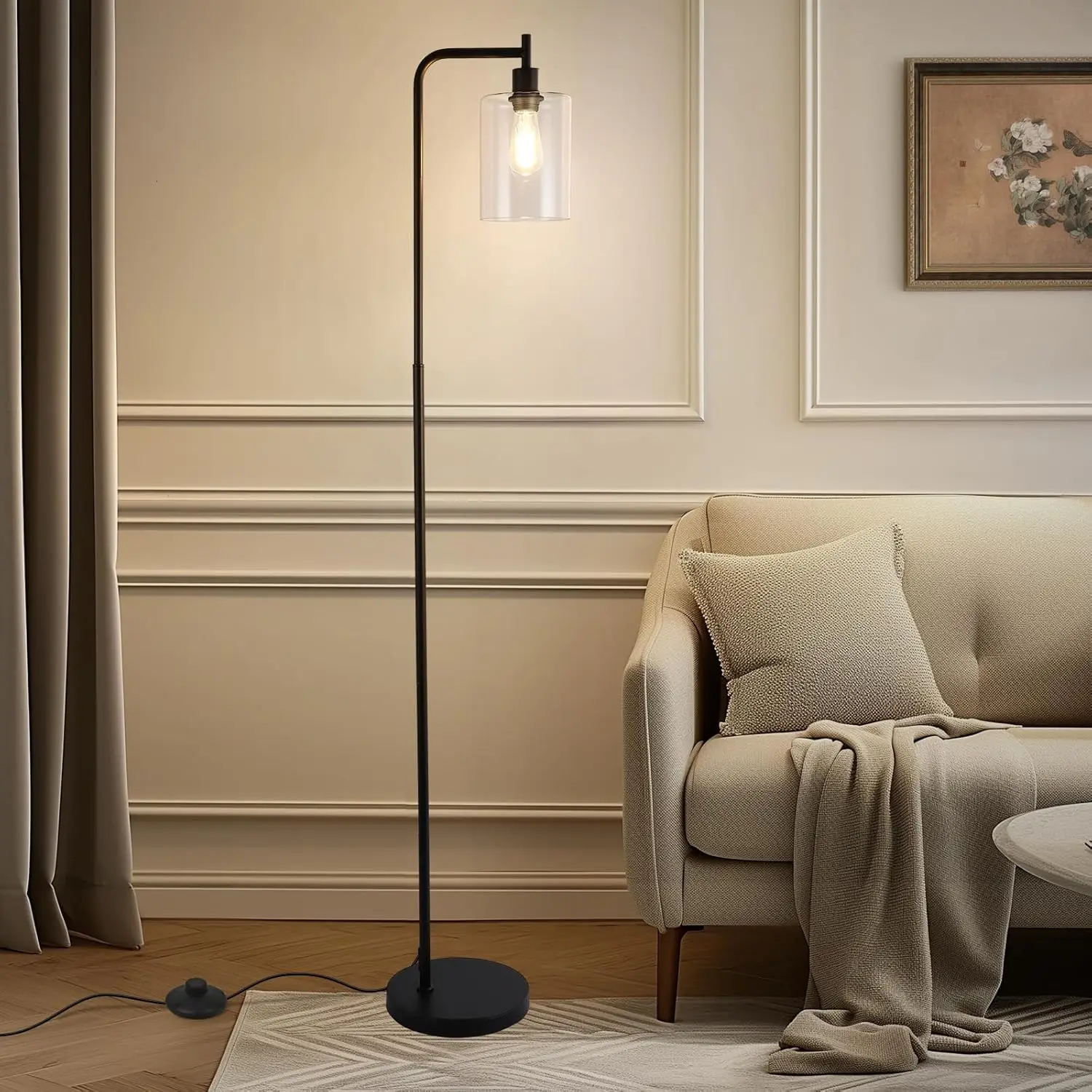
Shade Shapes and Light Distribution
The shape of your lampshade significantly affects where and how light spreads:
- Drum shades: Provide even light distribution in all directions
- Empire/cone shades: Direct more light downward for tasks
- Bell shades: Balance between up and down lighting
- Globe shades: Offer omnidirectional diffused illumination
- Specialty shapes: Can create artistic light patterns and focal points
When selecting a floor lamp, consider how the shade material and shape will interact with your specific lighting needs. A transparent glass shade provides maximum brightness but potential glare, while a fabric drum shade offers softer, more diffused illumination with reduced overall brightness.
Selecting the Perfect Floor Lamp for Different Spaces and Needs
Each room in your home serves different purposes and therefore requires specific lighting approaches.
Living Room Lighting
Living rooms typically need layered lighting that can adapt to various activities:
- Primary consideration: Versatility for conversation, TV watching, reading, and entertaining
- Recommended types: Arc lamps for seating areas, torchieres for overall illumination
- Ideal specifications: 2700-3000K color temperature, 1000-2000 lumens, dimmable options
- Placement strategy: Near seating groups but not blocking conversation sight lines
Bedroom Lighting
Bedrooms benefit from softer, adjustable lighting options:
- Primary consideration: Relaxing atmosphere with task options for reading
- Recommended types: Adjustable reading lamps, diffused ambient options
- Ideal specifications: 2700K (warm) color temperature, 400-800 lumens, dimmable
- Placement strategy: Beside seating or reading areas, not shining directly on bed
Home Office Requirements
Productive work spaces need bright, adjustable lighting that prevents eye strain:
- Primary consideration: Clear illumination without screen glare
- Recommended types: Task-focused designs with adjustable heads
- Ideal specifications: 3500-4000K (neutral to cool), 800-1200 lumens
- Placement strategy: Left side for right-handed users (vice versa for left-handed)
Are arc floor lamps good for various spaces? Absolutely—their versatility makes them suitable for multiple room types when properly selected and positioned. The key is matching the lamp’s characteristics to your specific space and activities.
Best Floor Lamps for Specific Lighting Requirements
When shopping for the optimal floor lamp, consider these top-performing categories based on specific needs:
Maximum Brightness and Room Fill
For large spaces or rooms lacking overhead lighting:
- Look for: Torchiere designs, multiple light sources
- Key specifications: 2000+ lumens, wide light distribution
- Features that matter: Height (taller lamps spread light further), reflective inner shades
Reading and Detail Work
For comfortable, eye-friendly task lighting:
- Look for: Adjustable heads, focused beam patterns
- Key specifications: 800+ lumens, 3000-4000K color temperature, precise positioning
- Features that matter: Stable base, glare reduction, adjustability
Versatility and Adjustability
For spaces serving multiple functions:
- Look for: Multi-head designs, adjustable arms or necks
- Key specifications: Individual controls, range of motion, dimming capability
- Features that matter: Quality joints that maintain position, ease of adjustment
Mood Lighting and Ambiance
For creating atmosphere and visual comfort:
- Look for: Dimmable options, warm color temperatures
- Key specifications: 2700-3000K color temperature, 400-800 lumens
- Features that matter: Quality diffusers, aesthetic shade materials
Best arc lamps for living rooms typically balance form and function, providing both targeted illumination and visual interest as sculptural elements within your space.
Adjustable Arc Floor Lamp, Bronze Arc Floor Lamp
Price range: $440.95 through $558.52 Select options This product has multiple variants. The options may be chosen on the product page- Price range: $174.28 through $658.31 Select options This product has multiple variants. The options may be chosen on the product page
Brass Arc Floor Lamp, Contemporary Arc Floor Lamp, LED Arc Floor Lamp
Price range: $490.72 through $522.04 Select options This product has multiple variants. The options may be chosen on the product pageChrome Arc Floor Lamp, LED Arc Floor Lamp
Price range: $304.95 through $1,210.40 Select options This product has multiple variants. The options may be chosen on the product pageLED Arc Floor Lamp, Rattan Arc Floor Lamp
$313.58 Select options This product has multiple variants. The options may be chosen on the product page3 Light Arc Floor Lamp, Dimmable Arc Floor Lamp
Price range: $162.86 through $246.50 Select options This product has multiple variants. The options may be chosen on the product page
Advanced Features That Elevate Floor Lamp Performance
Premium floor lamps often include sophisticated features that enhance both functionality and convenience:
Dimmability Options
Adjustable brightness allows one lamp to serve multiple purposes:
- Continuous dimmers: Smooth transition from bright to dim
- Step dimmers: Preset brightness levels (high, medium, low)
- Touch dimmers: Easy adjustment without knobs or switches
- Benefits: Energy savings, mood versatility, extended bulb life
Adjustability Mechanisms
Physical adjustments expand a lamp’s utility:
- Height adjustment: Telescoping poles or sliding mechanisms
- Direction adjustment: Swivel heads, flexible necks, rotating arms
- Quality indicators: Smooth operation, position memory, stability when adjusted
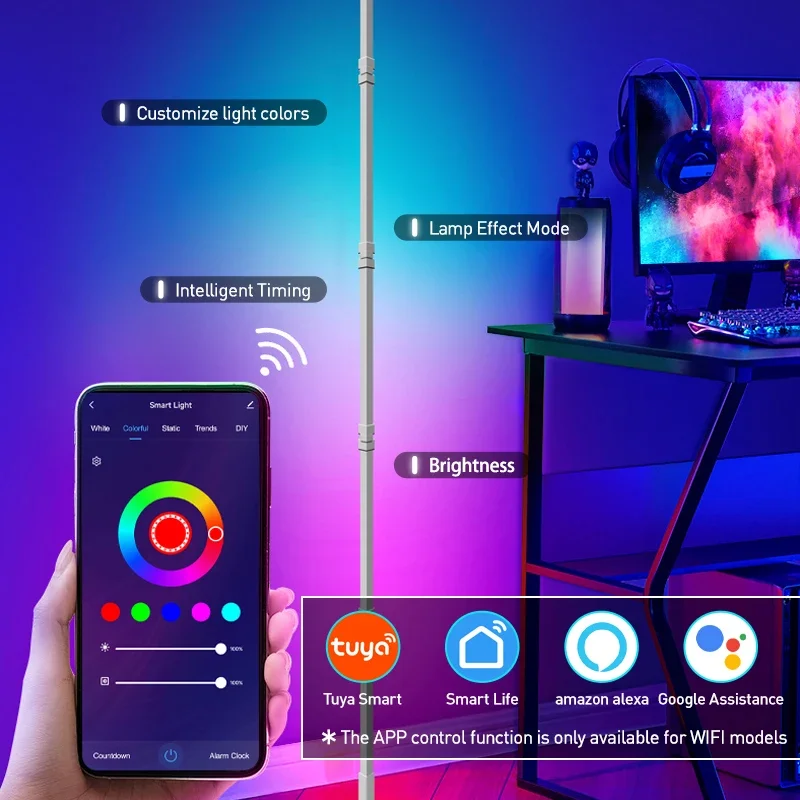
Smart Integration
Connected lighting adds convenience and customization:
- Smartphone control: Adjust brightness and color from apps
- Voice control: Compatibility with smart assistants
- Scheduling: Automatic timing for consistent lighting
- Scene setting: Preset combinations for different activities
The ultimate guide to adjustable lighting provides deeper insights into how these features can enhance your lighting experience and adapt to changing needs.
Strategic Placement for Optimal Light Distribution
Even the best floor lamp won’t perform optimally if poorly positioned. Strategic placement maximizes illumination effectiveness:
Corner Placement Strategies
Corners offer stability and light projection opportunities:
- Position lamps at 45° angles to spread light across two walls
- Use upward-facing lights to reduce harsh shadows
- Keep 12-18 inches of clearance for proper heat dissipation
Activity-Centered Positioning
Focus light where it’s most needed:
- Reading lamps: Position behind and slightly to the side of seating
- Dining areas: Arc lamps centered 30-36 inches above the table
- Conversation areas: Ambient lighting at eye level when seated
Complementary Light Layering
Multiple light sources create dimension and eliminate shadows:
- Place floor lamps at different heights from table lamps
- Position lights to balance natural daylight sources
- Use lamps with different beam spreads for complete coverage
The question of should lamps be in corner positions depends entirely on your room’s layout and lighting goals—corners work well for ambient lighting but may not be ideal for task-focused illumination.
Essential Buying Considerations: Ensuring Long-Term Satisfaction
Before making your final selection, consider these factors that affect long-term satisfaction:
Build Quality Indicators
- Heavy, stable base: Prevents tipping (especially important for arc lamps)
- Seamless joints: Sign of quality construction
- Material thickness: Thicker metal components indicate durability
- Wiring protection: Internal or neatly managed external wiring
Value Assessment
- Light output per dollar: Compare lumens and features against price
- Energy efficiency: Lower operating costs over time
- Bulb replacement costs: Proprietary vs. standard bulbs
- Expected lifespan: Quality lamps should last 10+ years
Space Compatibility
- Footprint dimensions: Base size appropriate for available space
- Height clearance: Sufficient ceiling height, especially for tall designs
- Visual proportion: Scale appropriate to your furniture and room size
When evaluating what to look for in an arc floor lamp, pay special attention to the stability of the base relative to the reach of the arc—this balance ensures both safety and performance.
Frequently Asked Questions About Floor Lamp Lighting
How many lumens do I need for my room size?
As a general guideline:
– Small rooms (under 150 sq ft): 1000-2000 lumens
– Medium rooms (150-250 sq ft): 1500-3000 lumens
– Large rooms (over 250 sq ft): 2500-4000 lumens
Remember that these recommendations assume the floor lamp is the primary light source. If complementing existing lighting, you can reduce these numbers.
What’s the best color temperature for reading?
Most people find 3000-3500K (warm white to neutral) optimal for reading. This range provides enough contrast for text clarity without the harsh blue tones of cooler lights that can cause eye strain during extended reading sessions.
Is it better to have one bright floor lamp or multiple smaller lamps?
Multiple light sources generally create more balanced illumination with fewer harsh shadows. However, a single high-quality floor lamp with good diffusion can work well in smaller spaces. For larger rooms, multiple light sources allow for more flexible “zones” of light.
How long do LED floor lamps last?
Quality LED floor lamps typically provide 25,000-50,000 hours of use before significant light degradation. At 4 hours of daily use, that translates to 17-34 years of service. The fixture itself may outlast the LED components in integrated designs.
Enhancing Your Lighting Environment: Beyond the Floor Lamp
While floor lamps can dramatically improve your lighting, they work best as part of a cohesive lighting strategy:
Complementary Light Sources
Create depth and eliminate shadows by combining:
– Floor lamps for medium to tall lighting needs
– Table lamps for lower-level, intimate lighting
– Wall sconces for architectural emphasis and wall washing
– Ceiling fixtures for overall illumination
Reflective Surface Utilization
Maximize light effectiveness through:
– Light-colored walls that reflect rather than absorb light
– Strategically placed mirrors to amplify lamp brightness
– Metallic accents that catch and redistribute light
– Glass or glossy surfaces that extend light reach
Seasonal Adjustments
Adapt your lighting to changing natural light conditions:
– Winter: Increase brightness and use warmer tones to combat shorter days
– Summer: Lower intensity and use cooler tones to complement abundant daylight
– Spring/Fall: Adjust lamp positions to account for changing sun angles
By considering your floor lamp as part of a complete lighting ecosystem, you can create a flexible, comfortable environment that enhances both the function and mood of your space.

